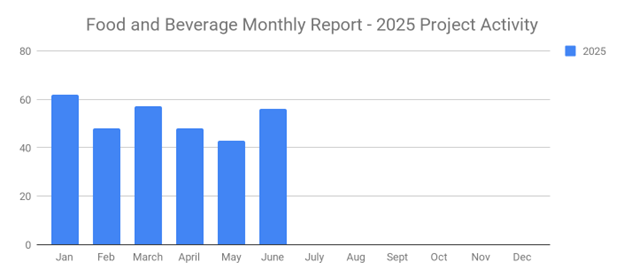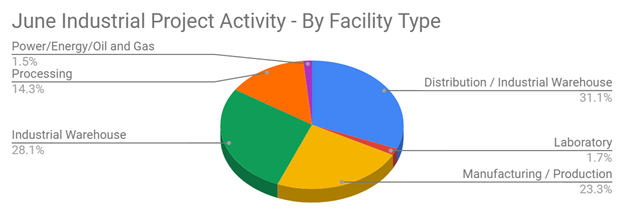
There are different ways to measure the performance of your B2B sales strategy. In addition to analyzing total sales, you can look at your win rate. Win rate is a common metric used by sales reps. By using it, you can gain insight into the performance of your B2B sales strategy. A high win rate indicates that your B2B sales strategy is effective, whereas a low or average win rate indicates that your B2B sales strategy needs work. What is win rate exactly, and how do you improve it?
What Is Win Rate?
Also known as opportunity-to-win ratio, win rate is a sales-related performance metric. It represents the percentage of sales opportunities that you won during a given period. If you had 200 sales opportunities last month and won 100 deals from them, your win rate for that month would be 50%. Win rate is simply a measurement of how many sales that you generate from all sales opportunities during a given period.
Sales opportunities are qualified leads who've made it to the proposal part of your sales pipeline. They aren't new or otherwise "fresh" leads. Rather, sales opportunities are vetted and nurtured leads. After acquiring the information of a prospective buyer, you may want to qualify him or her as a lead. Qualification involves researching the prospective buyer to ensure he or she is a good fit for your B2B company. You can then send the qualified, prospective buyer a proposal. Prospective buyers who agree to your proposal will raise your win rate. Prospective buyers who reject your proposal, on the other hand, will lower your win rate.
Win Rate vs Close Rate
While the terms "win rate" and "close rate" are often used interchangeably, they aren't the same. Close rate is the overall percentage of sales that you won closed. In comparison, win rate is the percentage of sales that you won from sales opportunities.
You can calculate your close rate by comparing the total number of sales that you won during a given period by the total number of leads you had for that same period. All leads will affect your close rate, regardless of the sales pipeline stage in which they are located. Win rate is a narrower sales-related performance metric. Only sales opportunities will affect your win rate. Sales leads who haven't been qualified -- meaning the sales leads haven't made it to the proposal part of your sales pipeline -- won't affect your win rate. Win rate and close rate are similar in the sense that they both reveal the percentage of sales that you won. The difference is that win rate focuses specifically on sales opportunities, whereas close rate encompasses all types of leads.
What's a Normal Win Rate?
Win rates can vary depending on many factors. B2B companies that specialize in niche products or services, for instance, may experience a lower win rate than their counterparts that offer broader and more generalized products or services. Niche products and services are used for fewer commercial applications, so it's oftentimes more difficult to sell them.
Research, however, shows that the average win rate experienced by sales reps is 47%. In a study conducted by RAIN Group, researchers discovered that the average win is about 47%. More importantly, researchers found that sales reps lose 28% of their sales opportunities to competitors, and they lose 25% of their sales opportunities to indecisiveness. About half of all sales opportunities are lost because of competitors and indecisiveness. Whether your win rate is higher or lower than 47%, though, you can typically improve it.
Tips to Improve Your Win Rate
You can improve your win rate in several ways. When a lead rejects your proposal, for example, ask why he or she isn't interested in making a purchase. Understanding the reasons for rejections can help you overcome them. Take note of the reasons cited by leads for their rejections. After compiling them into a list, you can sort them according to how common they are. This list of rejections will provide insight into why leads are rejecting your proposals.
Refining your lead qualification process can have a positive impact on your win rate. Win rate, of course, specifically involves qualified leads. If you don't have a proper lead qualification process in place, you can expect a lower win rate. When qualifying leads, make sure they fit your B2B company's buyer persona. Qualified leads should consist of prospective buyers who can benefit from your B2B company's products or services. They should also have the authority to make purchases on behalf of their own business. If a lead can't purchase products or services, he or she will inevitably reject your proposal.
Evaluating your B2B company's competitors can have a positive impact on your win rate. As previously mentioned, 28% of all sales opportunities are lost to competitors. Qualified leads may reject your proposal if they believe a competitor's product or service is a better fit for their own business. By researching your B2B company's competitors, you can create a unique value proposition that compels leads to go with your B2B company rather than its competitors.
Another way to improve your win rate is to entice leads with an exclusive offer. Exclusive offers can consist of special discounts, free goods or services or limited-time promotions. With an exclusive offer, leads may feel compelled to take action by agreeing to your offer, in which case your win rate will increase. Even if a lead was originally planning to reject your proposal, an exclusive offer may persuade him or her to make a purchase.
In Conclusion
Don't let a low win rate prevent your B2B company from succeeding. Win rate reflects the percentage of sales that you generate from sales opportunities during a given period. You can improve your win rate by understanding why leads are rejecting your proposals, refining your lead qualification process, evaluating your B2B company's competitors and enticing leads with an exclusive offer. As your win rate increases, you'll generate more sales and experience fewer rejections.
What to learn more? Get in Touch
Latest Posts
-

June's New Distribution and Supply Chain Planned Projects Return to March’s 183 Confirmed Figure
-

Food and Beverage Rebounds with 56 New Planned Projects Igniting Growth After Decline
-

June 2025’s New Industrial Construction Projects Grew 7% Month-Over-Month
-

Q2 Industrial Manufacturing Soars 31% for Planned Projects Over $100M; June Planned Industrial Projects Hit 141

